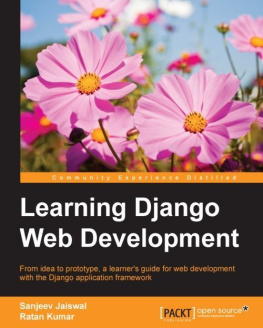What you need for this book
Required programming knowledge
Readers of this book should understand the basics of procedural and object-oriented programming: control structures (such as if, while, or for), data structures (lists, hashes/dictionaries), variables, classes, and objects. Experience in web development is, as you may expect, very helpful, but it is not required to understand this book. Throughout the book, I try to promote best practices in web development for readers who lack this experience.
Required Python knowledge
At its core, Django is simply a collection of libraries written in the Python programming language. To develop a site using Django, you write Python code that uses these libraries. Learning Django, then, is a matter of learning how to program in Python and understanding how the Django libraries work. If you have experience programming in Python, you should have no trouble diving in. By and large, the Django code doesn't perform a lot of magic (that is, programming trickery whose implementation is difficult to explain or understand). For you, learning Django will be a matter of learning Django's conventions and APIs.
If you don't have experience programming in Python, you're in for a treat. It's easy to learn and a joy to use! Although this book doesn't include a full Python tutorial, it highlights Python features and functionality where appropriate, particularly when code doesn't immediately make sense. Still, I recommend you read the official Python tutorial (for more information visit http://docs.python.org/tut/). I also recommend Mark Pilgrim's free book Dive Into Python , available online at http://www.diveintopython.net/ and published in print by Apress.
Required Django version
This book covers Django 1.8 LTS. This is the long term support version of Django, with full support until at least April 2018.
If you have an early version of Django, it is recommended that you upgrade to the latest version of Django 1.8 LTS. At the time of printing (July 2016), the most current production version of Django 1.8 LTS is 1.8.13.
If you have installed a later version of Django, please note that while Django's developers maintain backwards compatibility as much as possible, some backwards incompatible changes do get introduced occasionally. The changes in each release are always covered in the release notes, which you can find at https://docs.djangoproject.com/en/dev/releases/.
For any queries visit: http://masteringdjango.com.
Who this book is for
This book assumes you have a basic understanding of the Internet and programming. Experience with Python or Django would be an advantage, but is not necessary. It is ideal for beginner to intermediate programmers looking for a fast, secure, scalable, and maintainable alternative web development platform to those based on PHP, Java, and dotNET.
Conventions
In this book, you will find a number of text styles that distinguish between different kinds of information. Here are some examples of these styles and an explanation of their meaning.
Code words in text, database table names, folder names, filenames, file extensions, pathnames, dummy URLs, user input, and Twitter handles are shown as follows: "Type

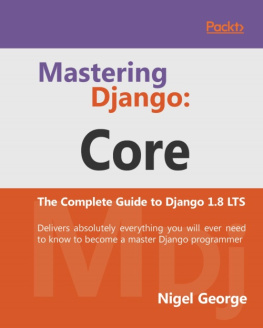
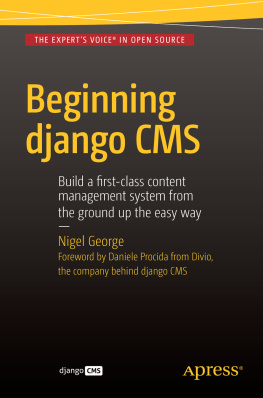

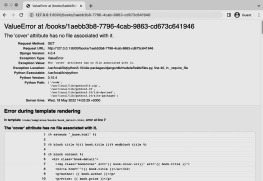



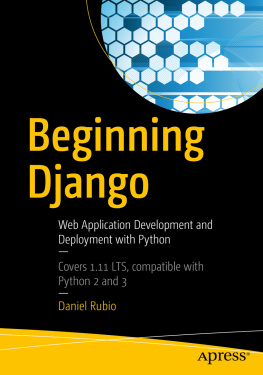
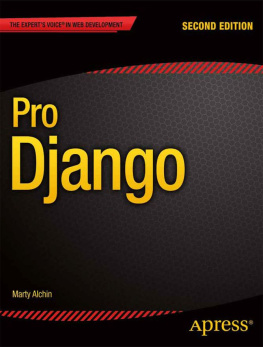
![Nigel George [Nigel George] - Mastering Django: Core](/uploads/posts/book/122398/thumbs/nigel-george-nigel-george-mastering-django-core.jpg)
